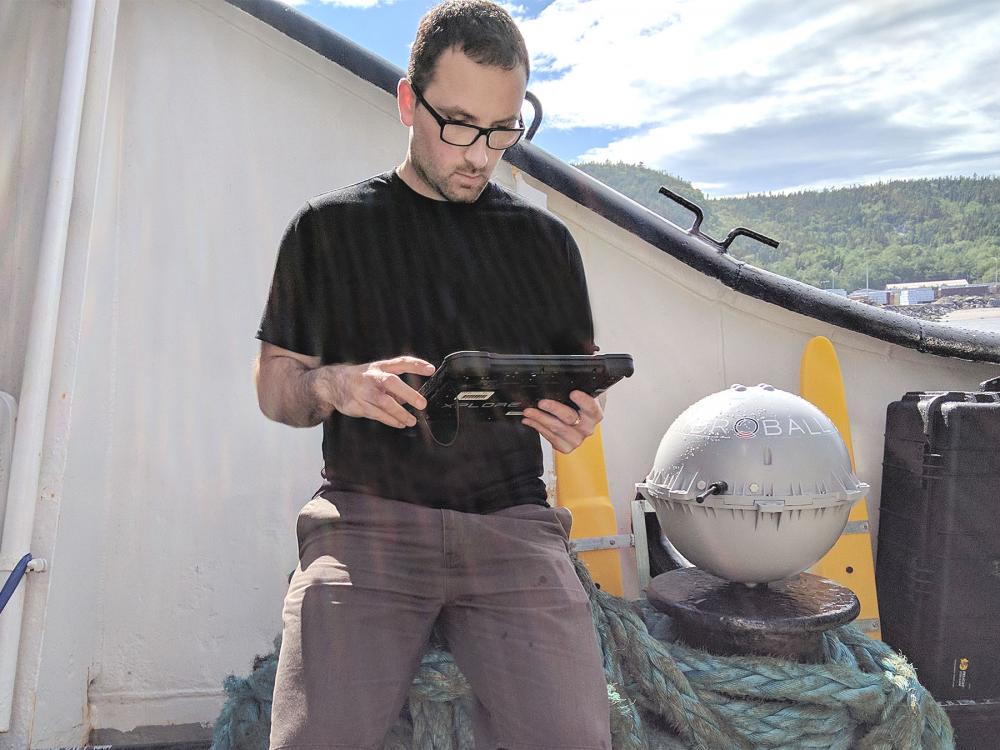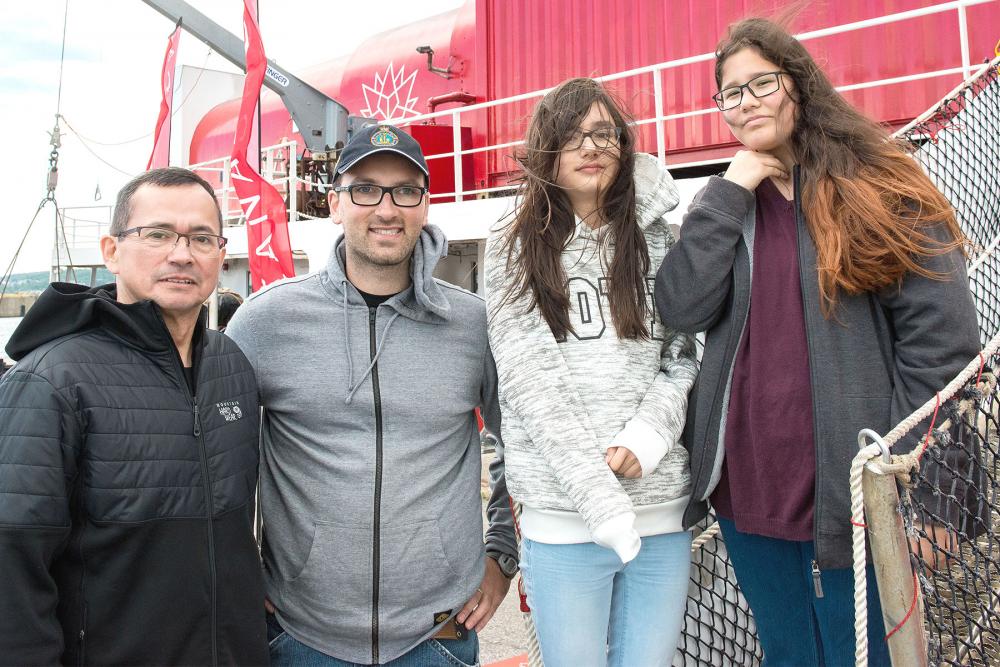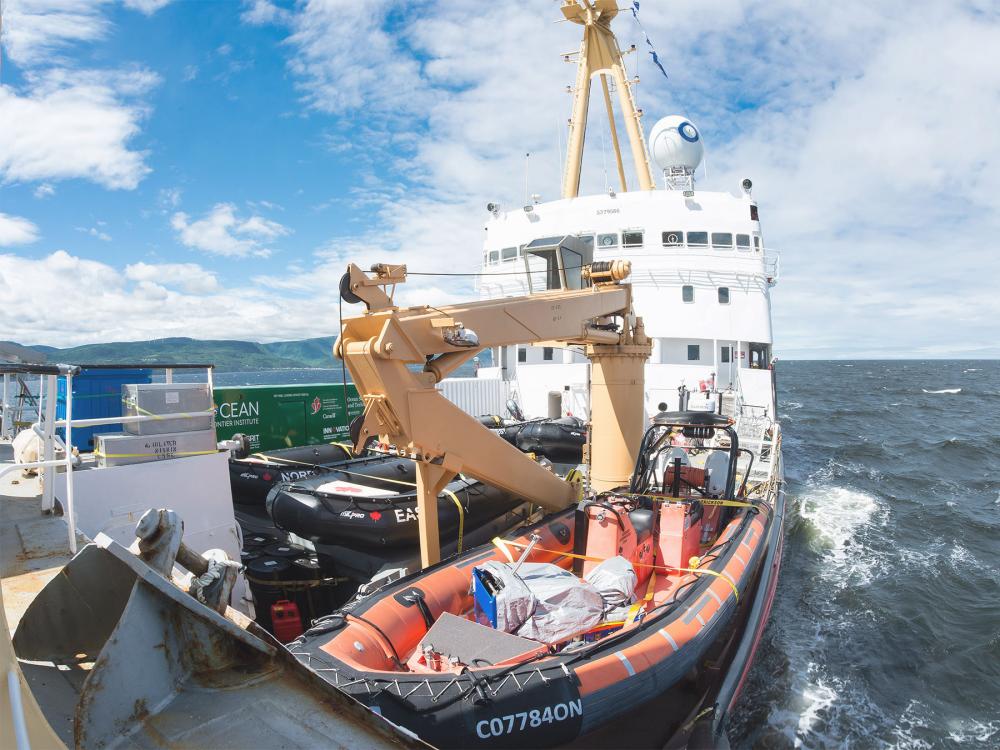
Canada C3 Expedition: a Hydrographer's Log Book
I climbed aboard the Polar Prince, the ship used for the Canada C3 project, on June 19 in Baie-Comeau. It was the third stage of the expedition. It started on June 1st in Toronto with the aim of reaching Victoria via the Northwest Passage and crossing the country's three oceans. All in 150 days! An unprecedented journey organized to celebrate Canada and bring Canadians together. By stopping in numerous cities, villages and communities across coastal Canada, the Canada C3 Expedition seeks to promote the four key themes selected as part of Canada's 150th anniversary of Confederation, namely: Diversity and Inclusion, Reconciliation, Youth Engagement and the Environment.
I am a hydrographer at the Maurice Lamontagne Institute in Mont-Joli. I joined the Canada C3 science team to promote the products and services of the Canadian Hydrographic Service (CHS), among both travelling participants and the public visiting the Polar Prince during its many ports of call.
Environment component and hydrography
Many biologists and oceanographers on board are working on the expedition's Environment component, which includes 25 scientific research protocols implemented at a number of sites on the ship's itinerary. For example, water samples are taken to map the environmental DNA of biodiversity across Canada. Collection of seabed sediment also makes it possible to quantify microplastic pollution in less well-known areas along the Canadian coastline. As such, the Canada C3 science program will be used to advance our current scientific knowledge and contribute to the development of future research.
The Environment component also includes marine safety and hydrography. The electronic and traditional paper-based nautical charts designed by the CHS, as well as our tide and current tables, are indispensable tools for marine safety. There is no shortage of challenges in the field of hydrography when we consider that in a country like Canada, which has extensive areas of sea, marine safety is crucial for both the economy and the environment.
This is the context in which the CHS hopes to be able to count on the participation of external partners, especially the Aboriginal and Inuit communities in northern regions, in the data collection process. These partners could conduct their own surveys and provide us with additional data using the HydroBall technology. Small in size, the HydroBall buoy is easy to transport. With minimal training, it can also be used by those with limited experience. So, I brought one of these devices on board the ship to perform demonstrations and show people how it is used. The CHS believes that collective participation in data collection will prove inevitable very soon.
Significant events
June 21 was particularly significant as it simultaneously marked World Hydrography Day and National Aboriginal Day. For the occasion, I welcomed Alain Rock, a geography teacher at Pessamit secondary school in Betsiamites, as well as two Innu students, for a visit to the Polar Prince. We also discussed the values of the Canada C3 project in the Legacy Room. It was set up specifically for reconciliation discussions between Aboriginal and non-Aboriginal peoples.
Lastly, I shared the scientific aspect of the Canada C3 project with my guests, mainly with regard to the hydrographic component. On this special day, I told them that, based on a well-established tradition, the CHS office in Mont-Joli wanted to assign the name of marine birds to the two new hydrographic launches that it recently acquired, but this time in the Innu language. The representatives of the Innu community in Pessamit were very touched and honoured by this initiative. It was a lovely meeting in terms of human relations and one that aligned perfectly with the values promoted by the Canada C3 project.
Yann Côté Nadeau
Sciences

@ J.-A. Wilkins
Yann Côté-Nadeau and the HydroBall buoy by his side

@ J.-A. Wilkins
Alain Rock, Yann Côté-Nadeau and two Innu students

@ J.-A. Wilkins
The Polar Prince, the ship assigned to the Canada C3 expedition





